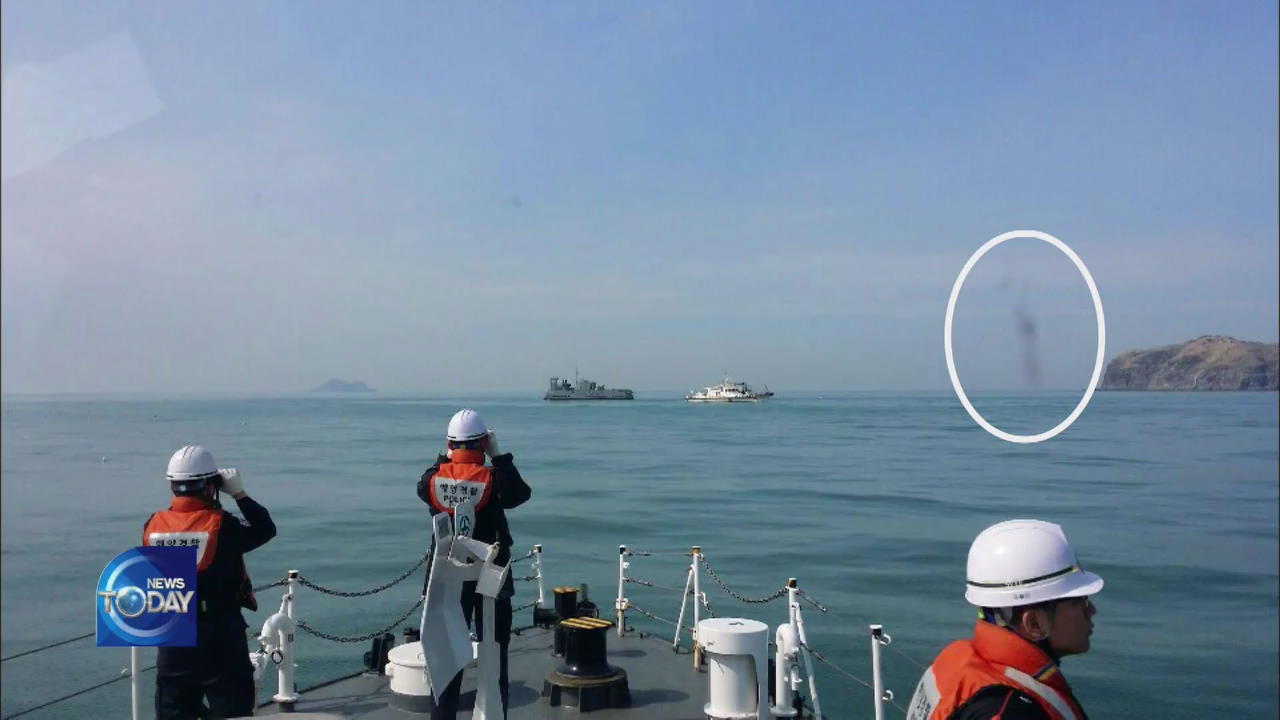AIR FORCE FIGHTER JET CRASH
입력 2019.05.30 (14:57)
수정 2019.05.30 (16:46)
읽어주기 기능은 크롬기반의
브라우저에서만 사용하실 수 있습니다.
[Anchor Lead]
Back in February, a Korean Air Force fighter jet crashed into the West Sea 13 minutes after takeoff. The Air Force has found that the accident was caused by a technical failure in the jet's engine, which stopped operating because fuel supply had been blocked.
[Pkg]
On February 27, the Korean Air Force fighter jet KF-16D crashed into the West Sea during training. The jet experienced no problems during takeoff, but 13 minutes later its engine stopped working at an altitude of 14,000 feet. Luckily, the two pilots were able to escape from the aircraft unharmed. An investigation conducted by the Air Force over the past three months has revealed that the engine stopped working because fuel supply was blocked in the combustion chamber. The blockage was caused by foreign objects either inside or outside the aircraft. The investigators believe the blockage occurred in one of the three sections: the pipe connected to the fuel pump, inside the fuel pump, or the section connecting to the fuel control unit. However, an Air Force official said identifying the exact cause of the accident was impossible, because most of the engine parts that had been lifted from the depth of 50 meters were damaged.
[Soundbite] CHO SE-YOUNG(LT.COL., AIR FORCE) : "We will continue to identify the cause in cooperation with the U.S. Air Force and the jet's manufacturer through diverse experiments and simulation tests."
The accident prompted the Air Force to conduct close inspections of fuel systems in all of its KF-16 jets. The inspected fighter jets will be deployed in phases starting May 31.
Back in February, a Korean Air Force fighter jet crashed into the West Sea 13 minutes after takeoff. The Air Force has found that the accident was caused by a technical failure in the jet's engine, which stopped operating because fuel supply had been blocked.
[Pkg]
On February 27, the Korean Air Force fighter jet KF-16D crashed into the West Sea during training. The jet experienced no problems during takeoff, but 13 minutes later its engine stopped working at an altitude of 14,000 feet. Luckily, the two pilots were able to escape from the aircraft unharmed. An investigation conducted by the Air Force over the past three months has revealed that the engine stopped working because fuel supply was blocked in the combustion chamber. The blockage was caused by foreign objects either inside or outside the aircraft. The investigators believe the blockage occurred in one of the three sections: the pipe connected to the fuel pump, inside the fuel pump, or the section connecting to the fuel control unit. However, an Air Force official said identifying the exact cause of the accident was impossible, because most of the engine parts that had been lifted from the depth of 50 meters were damaged.
[Soundbite] CHO SE-YOUNG(LT.COL., AIR FORCE) : "We will continue to identify the cause in cooperation with the U.S. Air Force and the jet's manufacturer through diverse experiments and simulation tests."
The accident prompted the Air Force to conduct close inspections of fuel systems in all of its KF-16 jets. The inspected fighter jets will be deployed in phases starting May 31.
■ 제보하기
▷ 카카오톡 : 'KBS제보' 검색, 채널 추가
▷ 전화 : 02-781-1234, 4444
▷ 이메일 : kbs1234@kbs.co.kr
▷ 유튜브, 네이버, 카카오에서도 KBS뉴스를 구독해주세요!
- AIR FORCE FIGHTER JET CRASH
-
- 입력 2019-05-30 14:59:06
- 수정2019-05-30 16:46:58

[Anchor Lead]
Back in February, a Korean Air Force fighter jet crashed into the West Sea 13 minutes after takeoff. The Air Force has found that the accident was caused by a technical failure in the jet's engine, which stopped operating because fuel supply had been blocked.
[Pkg]
On February 27, the Korean Air Force fighter jet KF-16D crashed into the West Sea during training. The jet experienced no problems during takeoff, but 13 minutes later its engine stopped working at an altitude of 14,000 feet. Luckily, the two pilots were able to escape from the aircraft unharmed. An investigation conducted by the Air Force over the past three months has revealed that the engine stopped working because fuel supply was blocked in the combustion chamber. The blockage was caused by foreign objects either inside or outside the aircraft. The investigators believe the blockage occurred in one of the three sections: the pipe connected to the fuel pump, inside the fuel pump, or the section connecting to the fuel control unit. However, an Air Force official said identifying the exact cause of the accident was impossible, because most of the engine parts that had been lifted from the depth of 50 meters were damaged.
[Soundbite] CHO SE-YOUNG(LT.COL., AIR FORCE) : "We will continue to identify the cause in cooperation with the U.S. Air Force and the jet's manufacturer through diverse experiments and simulation tests."
The accident prompted the Air Force to conduct close inspections of fuel systems in all of its KF-16 jets. The inspected fighter jets will be deployed in phases starting May 31.
Back in February, a Korean Air Force fighter jet crashed into the West Sea 13 minutes after takeoff. The Air Force has found that the accident was caused by a technical failure in the jet's engine, which stopped operating because fuel supply had been blocked.
[Pkg]
On February 27, the Korean Air Force fighter jet KF-16D crashed into the West Sea during training. The jet experienced no problems during takeoff, but 13 minutes later its engine stopped working at an altitude of 14,000 feet. Luckily, the two pilots were able to escape from the aircraft unharmed. An investigation conducted by the Air Force over the past three months has revealed that the engine stopped working because fuel supply was blocked in the combustion chamber. The blockage was caused by foreign objects either inside or outside the aircraft. The investigators believe the blockage occurred in one of the three sections: the pipe connected to the fuel pump, inside the fuel pump, or the section connecting to the fuel control unit. However, an Air Force official said identifying the exact cause of the accident was impossible, because most of the engine parts that had been lifted from the depth of 50 meters were damaged.
[Soundbite] CHO SE-YOUNG(LT.COL., AIR FORCE) : "We will continue to identify the cause in cooperation with the U.S. Air Force and the jet's manufacturer through diverse experiments and simulation tests."
The accident prompted the Air Force to conduct close inspections of fuel systems in all of its KF-16 jets. The inspected fighter jets will be deployed in phases starting May 31.
이 기사가 좋으셨다면
-
좋아요
0
-
응원해요
0
-
후속 원해요
0












![[속보] 여야, ‘3% 룰’ 포함한 상법 개정안 처리 합의](/data/layer/904/2025/07/20250702_NFYEwa.jpg)




이 기사에 대한 의견을 남겨주세요.